Wildlife Sightings North And East Yorkshire - July 2018
The 1st July kicked off in rare bird style with the Squacco Heron still at Kilnsea Spurn before it flew north in the evening never to be seen again…On the same day a male Hen Harrier flew through Easington and 54 Little Gulls graced Kilnsea Wetlands. Up the coast at Hornsea Mere numbers of Little Gulls were building up with 225 adults there in the evening roost and 540 counted offshore the following morning. By the 18th the count had reached an impressive 3660! Common Cranes are a far more regular sight in the lowlands of East Yorkshire than the uplands further west so a juvenile at Gouthwaite Resevoir on the 3rd was a great record for the Nidderdale Birdwatchers.
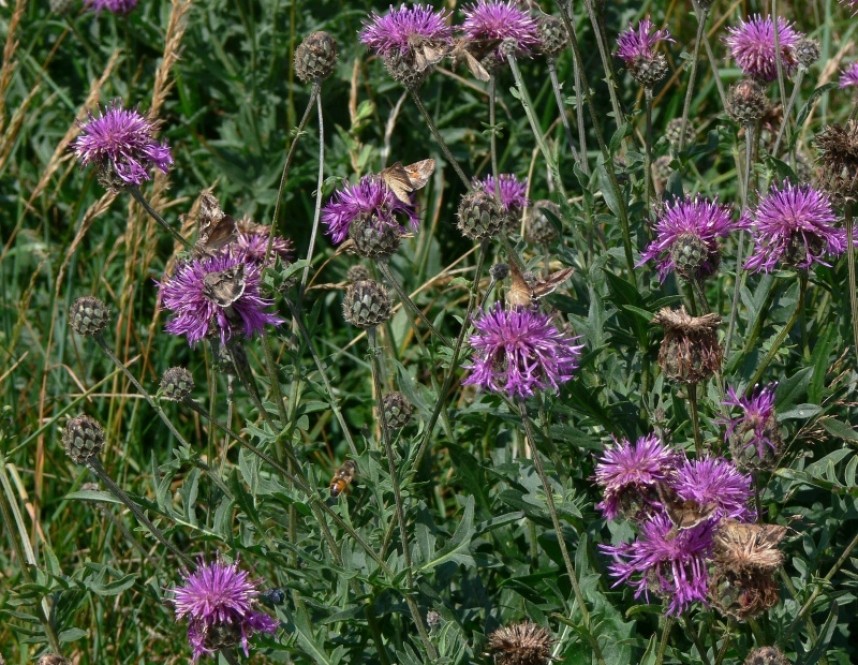
Silver Y moths at Flamborough © Richard Baines
Silver Y moths made landfall across the region at the start of the month with big numbers arriving on the cliff tops and coastal grasslands. At Filey 927 were counted on the 2nd with 500 at nearby Hunmanby Gap. Cetacean sightings were in the news this month with the Yorkshire coast featuring on the local BBC news. Minke Whales were further south than usual with many daily sightings between Long Nab and Flamborough throughout the month. The first Minke Whale of the month was two seen offshore at Long Nab on the 3rd. At Filey the first were two on the 8th along with two White-beaked Dolphins on the same day and then five off the Brigg the following day. At Long Nab on the 8th five Bottle-nosed Dolphins were seen. This pattern continued throughout the month with cetacean sightings occasionally focused around seabird feeding frenzies which often involved many thousands of seabirds. Despite these concentrations south of their traditional area there were still weekly sightings of Minke Whales in the Whitby and Staithes area.
Large numbers of Dark Green Fritillary butterflies were reported from traditional sites where they and other species of July emerging butterflies appeared to be faring well in the settled weather. Essex Skippers are seen in the Goole Moors area annually and again this year the population appears to be doing well. A Blackneck moth was caught in Skelton on the 4th where they are still scarce-rare. A moth trapping night at Hunmanby Gap on the 7th was described as stunning with 111 species caught from 530 moths which included locally rare species such as Broad-barred White and Double-lobed. A Mere Wainscot was trapped at Brafferton Spring on the 8th a site which represents the most northerly area for this species in the UK. On the same night five Pine Hawk Moths were caught. A new colony of Purple Hairstreak butterflies were discovered near Wrench Green much further north than their usual distribution in Yorkshire. A more typical record was of three near Howden East Yorks on the 11th.
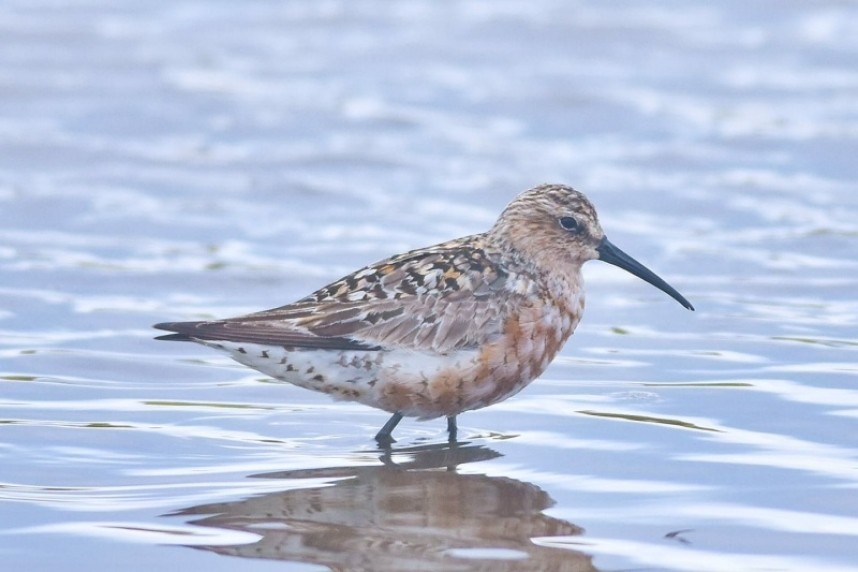
Curlew Sandpiper at Flamborough © Andy Hood
Roseate Terns have had a good breeding season on RSPB Coquet Island (Northumberland) with 118 breeding pairs and 119 chicks ringed. We didn’t have to wait long for the first evidence of migrating birds on the Yorkshire coast with one arriving early on the 2nd at Beacon Ponds. Small numbers were then seen regularly towards the end of the month in the Spurn area and up the coast at Flamborough, Filey and Long Nab. Three European Bee-eaters flying south along the cliff top grassland at Buckton on the 3rd was a big surprise for one lucky observer. Eurasian Spoonbills are now turning up at more and more sites on the coast in mid-late summer but Blacktoft Sands RSPB is still the best place to catch up with them in our area. Four were present on the 3rd along with 16 Spotted Redshanks. Two very unseasonal Long-tailed Ducks were seen flying north at Filey on the 1st and one was then found on a flooded pool at Flamborough on the 4th where the first Long-tailed Skua of the autumn flew north on the 4th. A European Serin flew south at Kilnsea Wetlands the following day. A Eurasian Bittern at Top Hill Low on the 9th was a nice summer surprise for the reserve. The first two Sooty Shearwaters of the autumn in North Yorkshire flew north past Old Nab Staithes on the 10th. An adult Rosy Starling was found in the garden of the Poachers Barn pub at Osgoodby on the 11th.
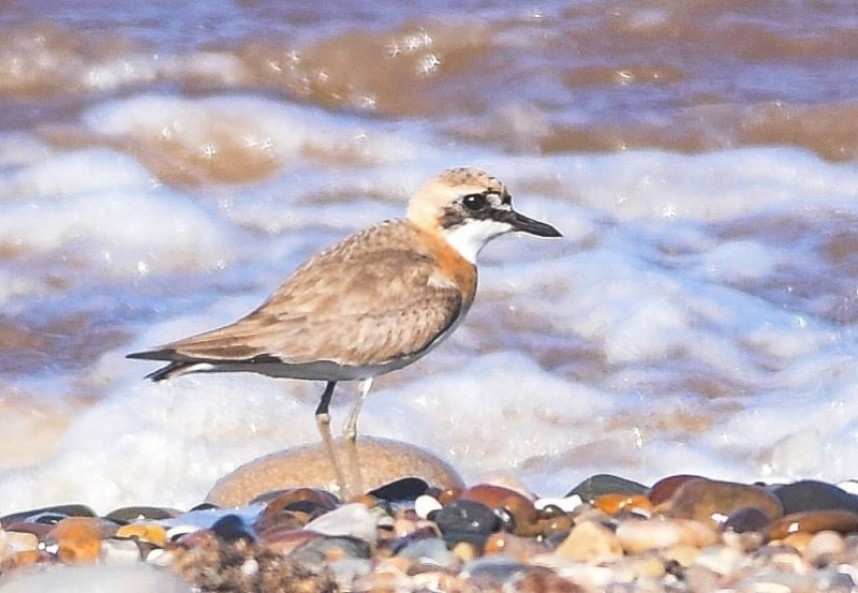
Greater Sand-plover At Beacon Ponds © Andy Hood
The first big new rare bird of the month was found at Spurn Beacon Ponds on the 14th a very smart adult Greater Sand Plover. The finder Alex Starace (Little Tern warden at Beacon Ponds) struck gold twice on the same day capturing this fantastic image of a Bedstraw Hawkmoth! On the same day a Marsh Tit down the road at the warren was only the 17th record for Spurn. The following day a Black Stork was seen flying low over Thorngumbald village. The female Montagu’s Harrier put in another appearance at Blacktoft on the 16th. A Pectoral Sandpiper was a good find at Scaling Dam reservoir on the 17th. Filey Bird Observatory and Group held a fantastic Bioblitz event on the 18th with over 900 species recorded which included three European Storm-petrels caught overnight.
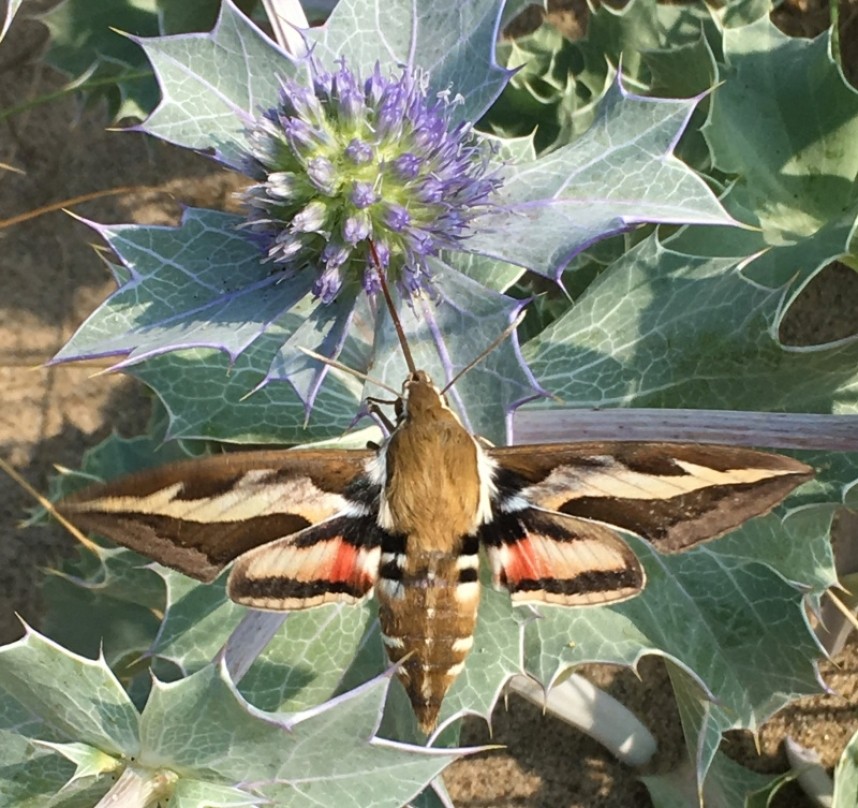
Bedstraw Hawk-moth at Beacon Ponds © Alex Starace
Birders travelling to see the Little Gull spectacle at Hornsea Mere were well rewarded on the 20th with an adult White-winged Tern. On the same day a Golden Oriole was reported by Cherry Burton village pond. By the middle of the month butterfly movements were on the increase and especially Large White and Small White, thousands were reported moving north along the cliff top at Hunmanby Gap on the 14th. On the same date a Leopard Moth was caught at Hunmanby Gap. A Small Rannunculus moth was caught at Cottingham on the 15th. An excellent count of over 100 Grayling butterflies was made at South Gare on the 18th. An Essex Skipper was photographed at Cawood North Yorkshire on the 24th.
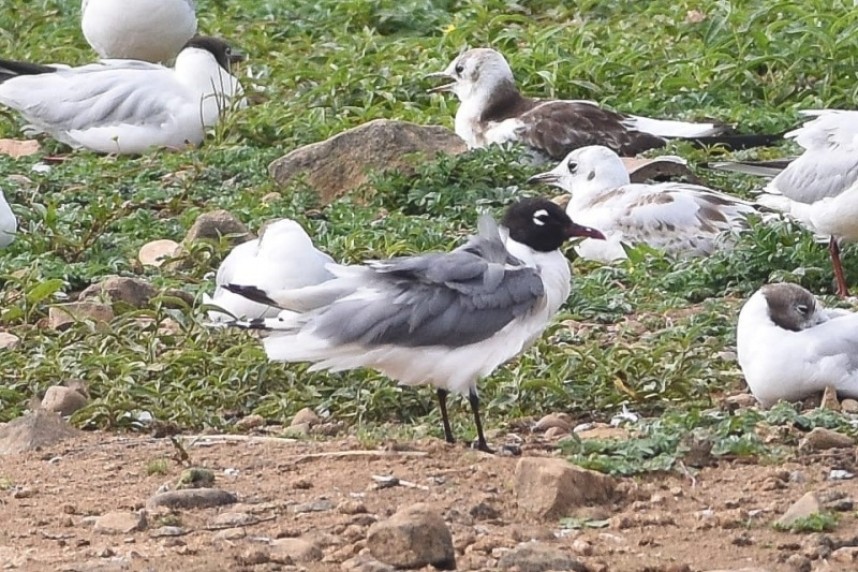
Franklins Gull at Scaling Dam © Andy Hood
Scaling Dam is having its best ever year for rare birds and was again the place to be on the 21st when a very smart adult Franklin’s Gull was found. It spent the next couple of weeks showing on and off mainly in the evening gull roost and also visiting nearby Lockwood Beck Reservoir. On the Humber wader numbers were really starting to build up with a great count of 8,000 Dunlin made on the 22nd in the Kilnsea Wetlands area which increased to 10,000 on the 30th. The hot weather was having a significant effect on insects as rare continental species moved north on a wave of high pressure. The first Southern Migrant Hawker dragonfly for Yorkshire was found at Flamborough on the 23rd not to be outdone the second was then found at Spurn on the 25th. The 23rd was a fantastic day for Odonata on the Headland with only the second Keeled Skimmer found and a migrant Red-veined Darter.
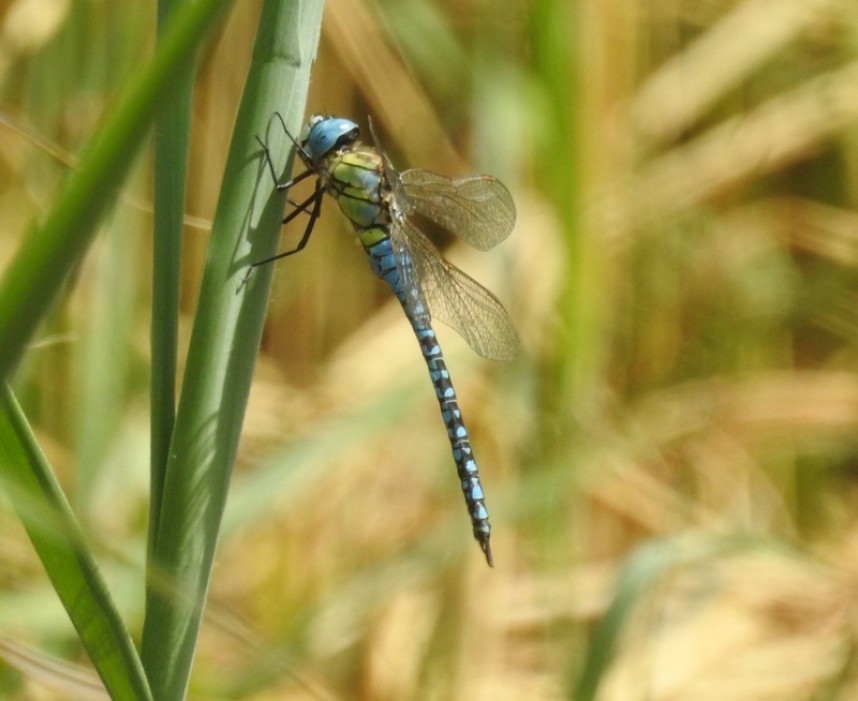
Southern Migrant Hawker at Kilnsea © Jonnie Fisk
On the 23rd an adult Rosy Starling was also found on Flamborough Headland. On the 23rd a Leaches’ Storm-petrel was seen during the nigh time ringing session. The first Balearic Shearwater of the autumn was seen at Hornsea with one offshore on the 24th. The coverage Scaling Dam was getting from visiting birders paid off again when a Marsh Sandpiper was found on the 25th. A significant overnight increase in Red Knot numbers were noticed at Spurn when 4,000 were counted on the 26th. This big wader movement was a great indication something rare may be lurking around the corner and sure enough the next day a moulting adult Semi-palmated Sandpiper was found on Kilnsea Wetlands alongside many other waders including seven Curlew Sandpipers increasing to 12 on the 28th. A Pied Crow of unknown origin was still at Flamborough on the 25th.
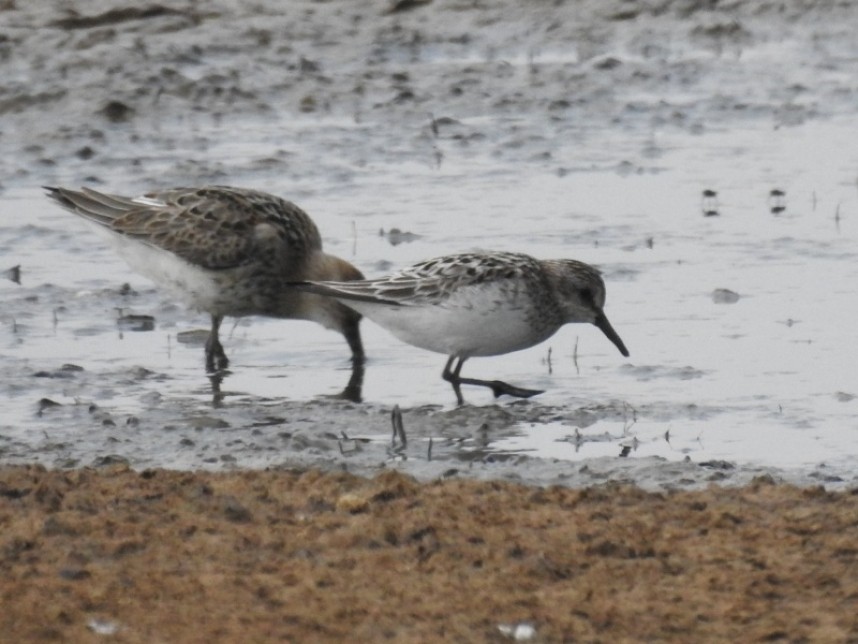
Semi-palmated Sandpiper at Kilnsea Wetlands © Jonnie Fisk
Two Pied Flycatchers arrived at Flamborough on the 27th, part of a noticeable influx to the east coast of England. Common Swift numbers were building on the coast; Spurn started the show with 4841 on the 28th, an excellent count of 5695 was then made at Flamborough on the 29th whilst on the same day a count of 4,264 was made at Long Nab and 3471 at Spurn. This must be the first time Long Nab and Flamborough have recorded more Swifts on day than Spurn! A Eurasian Bittern was at Hornsea Mere on the 29th along with Black Tern and Black-necked Grebe. Another great moth trapping night at Hunmanby Gap on the 27th produced 700 moths of 94 species including an Oak Nycteoline a first for the Filey area. A White-letter Hairstreak was found at Filey in the top scrub area on the same date.
Flamborough scored the biggest mammal sighting of the month trophy on the 30th when a Humpback Whale spent two hours feeding offshore from the northern part of the Headland. This was a great summer day to be at Flamborough as Balearic Shearwater, Pomarine Skua, Wood Sandpiper and Short-eared Owl were also seen. The following day was to become the start of a surge in records of White-letter Hairstreak butterflies from coastal locations when one was found in South Dykes car park area at Flamborough, on the same day a Great Egret paid a brief visit to Thornwick Pools. Spurn/Kilnsea continues to hold the biggest numbers of Mediterranean Gulls with a 2018 high count off 66 made on the last day of July. Throughout July, European Honey Buzzards showed well from Wykeham Raptor Viewpoint with almost daily sightings of up to three birds. Individual features have allowed local birders to identify at least five birds.
Many thanks to all the observers who contributed sightings and photographs. This article covers North and East Yorkshire. For more wildlife sightings visit these great local, regional and national web sites
Spurn Bird Observatory, Flamborough Bird Observatory, Filey Bird Observatory and Group, Northern Rustic blogspot , Yorkshire Naturalists Union, Yorkshire Wildlife Trust, Scarborough Birders, Butterfly Conservation Yorkshire Branch Yorkshire Nature Traingle For National News: Birdguides
Richard Baines
Yorkshire Coast Nature



 Back to Blog
Back to Blog
